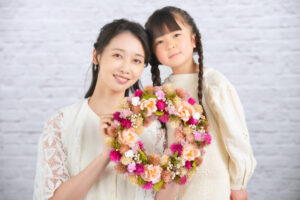Reference from the Agency for Cultural Affairs
- English subtitles -
Japanese form
We will study four things here.
1, nouns, verbs, adjectives
2, sentence structure
3, particles
4, proper use of speaking style
First are nouns, verbs, and adjectives.
Words can be divided into various groups such as nouns, verbs and adjectives.
Look at this
Saru ga ookii banana wo tabemasu
名詞 形容詞 名詞 動詞
Noun Adjective Noun Verb
(The monkey eats a big banana.)
“Saru” and “banana” are nouns
“Tabemasu” is a verb
“Ookii” is an adjective
The adjective “ookii” describes the noun “banana”
There are two types of adjectives
“I adjective” and “na adjective”
“I adjective” becomes “I” in front of a noun like “ookii(big banana”.
“Na adjective” becomes “Na” in front of a noun like “kireina(luxury) banana”.
- Japanese subtitles -
日本語の形
ここでは4 つのことを勉強します。
1、名詞、動詞、形容詞
2、文の構成
3、助詞
4、話し方の使い分け
まずは、名詞・動詞・形容詞です。
言葉は名詞・動詞・形容詞などいろいろなグループに分けることができます。
これを見てください。
猿が 大きい バナナを 食べます 。
名詞 形容詞 名詞 動詞
Noun Adjective Noun Verb
「猿」、「バナナ」は名詞です 。
「食べます」、は動詞です 。
「大きい」は形容詞です。
形容詞の「大きい」は名詞の「バナナ」を説明しています
形容詞は2 種類あります 。
「い形容詞」、と、「な形容詞」、です
「い形容詞」は「大きいバナナ」のように名詞の前では、「い」になります。
「な形容詞」は「高級なバナナ」の様に名詞の前では「な」になります。
If you have any questions, ask them for free! ➡ Japanese Question Form

Private tutoring is a shortcut to language learning
Don’t worry if there are no Japanese language classes nearby. We can arrange a tutor near you.
Anyone can study at the most accessible places, such as local cafes, community centers, offices, homes, and online.
If you haven’t taken a free trial lesson yet, register now to request a tutor.

When is Mother’s Day in Japan?
Does your country have a Mother’s Day? Japan also has Mother’s Day. I vaguely remember Mother’s Day in May…and Father’s

Popular Car Models and New Car Prices in Japan
It is said that there are about 1.3 million foreigners working in Japan on work visas. Many of them may

Why Chinatowns flourished in Japan and recommended areas
Chinatowns” exist in various locations in Japan. Chinese food, one of the three most popular cuisines in the world, has

Classes for Learning Japanese in Okinawa
In this day and age when we can look up information from all over the world on the Internet, it





